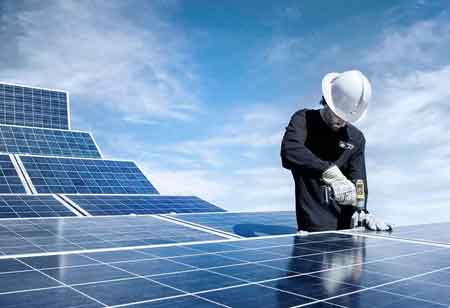Thank you for Subscribing to Energy Business Review Weekly Brief
Unveiling the Potential of Hydrogen Storage in Europe
Like many regions worldwide, Europe is transitioning towards a clean energy future. Renewable energy sources

By
Energy Business Review | Tuesday, June 25, 2024
Stay ahead of the industry with exclusive feature stories on the top companies, expert insights and the latest news delivered straight to your inbox. Subscribe today.
Europe aims for a clean energy future, focusing on renewables like solar and wind. Hydrogen, a potential energy source, can balance the grid and promote energy security.
FREMONT, CA: Like many regions worldwide, Europe is transitioning towards a clean energy future. Renewable energy sources such as solar and wind are essential for diminishing reliance on fossil fuels. However, their intermittent nature presents a significant challenge to grid stability. In this context, hydrogen emerges as a potential game-changer.
How Hydrogen Can Balance the Grid
Storing Excess Renewables: When renewable energy production surpasses demand, the excess can be utilised to generate hydrogen through electrolysis. This process splits water molecules into hydrogen and oxygen using electricity. The resulting hydrogen can be stored in various forms, such as compressed gas or liquid, for future use.
Dispatching Power on Demand: During low renewable energy production or peak demand periods, the stored hydrogen can be reconverted into electricity through fuel cells. This provides a clean and reliable power source, addressing the intermittency issues associated with renewable energy.
Geographic Balancing: Hydrogen's potential extends beyond temporal balancing, enabling geographic balancing. Regions with high renewable energy potential can produce hydrogen and transport it to areas with lower renewable resources. This promotes energy security and contributes to a more integrated European grid.
Hydrogen Storage Technologies
Underground salt caverns offer large-scale, secure hydrogen storage with minimal leakage risk, although suitable geological locations are limited. Depleted oil and gas fields present a cost-effective repurposing opportunity for hydrogen storage, but concerns about sound integrity and potential methane leakage require careful evaluation. Solid-state storage, an emerging technology, involves binding hydrogen with specific materials for safe and compact storage at ambient temperatures, but large-scale implementation remains under development.
The Role of Electrolyzers
Electrolysers are essential for hydrogen production from renewable energy sources. Two primary types dominate the field: Proton Exchange Membrane (PEM) and Alkaline Electrolyzers. PEMs are efficient and well-suited for variable renewable energy sources, while Alkaline Electrolyzers are a mature technology with lower upfront costs. Strategic placement of electrolysers near renewable energy sources, such as wind farms and solar parks, can minimise transmission losses and optimise overall system efficiency.
The Hydrogen Economy and Trade
As Europe scales up hydrogen production, international trade becomes increasingly critical. Regions with abundant renewable resources, like North Africa, have the potential to become significant hydrogen exporters, necessitating a robust import infrastructure for Europe's hydrogen strategy. Establishing clear hydrogen quality, transportation, and safety standards will be crucial to facilitate smooth international trade.
Public Perception and Social Considerations
Gaining public acceptance is essential for successful hydrogen deployment. Addressing safety concerns through open communication and transparent safety protocols is vital to alleviate public apprehensions about hydrogen storage and transportation. Conducting Life Cycle Assessments is crucial to ensure the overall sustainability of the hydrogen value chain, including the environmental impacts of production and infrastructure development.
The Latest Developments in Europe
The European Commission has recognised hydrogen's potential and set ambitious goals within the EU Hydrogen Strategy, aiming to produce 10 million tonnes of renewable hydrogen and import an additional 10 million tonnes by 2030. To achieve these targets, the EU invests heavily in hydrogen research, development, and infrastructure projects. Initiatives such as the Important Projects of Common European Interest (IPCEIs) on hydrogen support innovative technologies across the hydrogen value chain. Real-world projects across Europe are also demonstrating hydrogen's potential.
With continued government support through targeted policies and financial incentives, the European hydrogen landscape will be vital for reducing production costs and accelerating infrastructure development. Collaboration between governments, research institutions, and private companies is essential to foster innovation and accelerate commercialisation. Public education campaigns and pilot projects showcasing hydrogen applications can help build public trust and support for hydrogen as a clean energy solution. By addressing these complexities and fostering an environment for innovation, Europe can unlock the full potential of hydrogen storage, paving the way for a secure, sustainable, and decarbonised energy future.
Hydrogen presents substantial potential as a sustainable, long-term energy storage solution for Europe. Its capacity to facilitate the integration of renewable energy sources into the grid, enhance energy security, and support the decarbonisation of various sectors is noteworthy. Nonetheless, addressing challenges related to production costs, storage efficiency, and robust infrastructure development is essential for widespread adoption. With ongoing research and development, hydrogen is poised to play an increasingly significant role in Europe's clean energy future.






